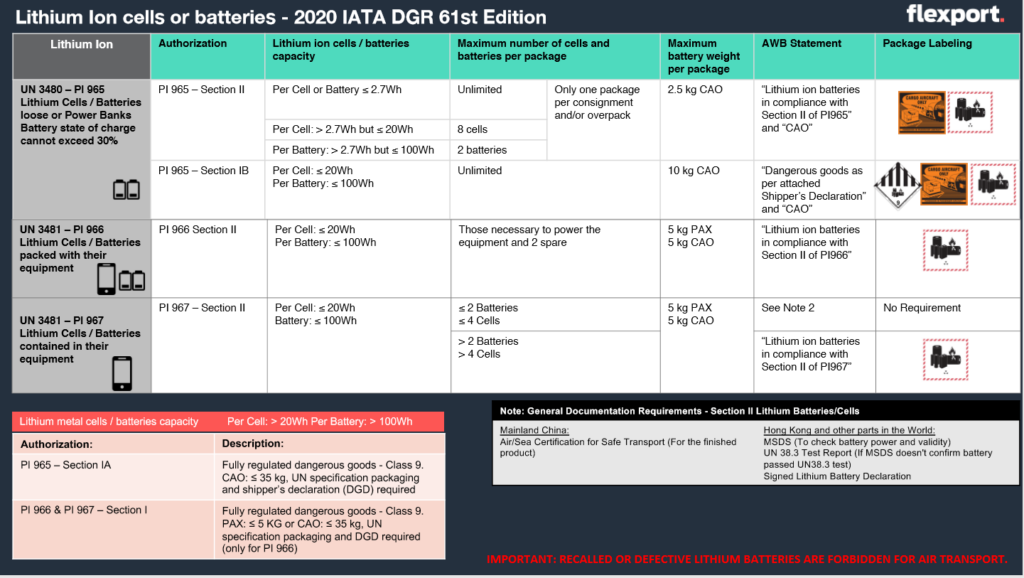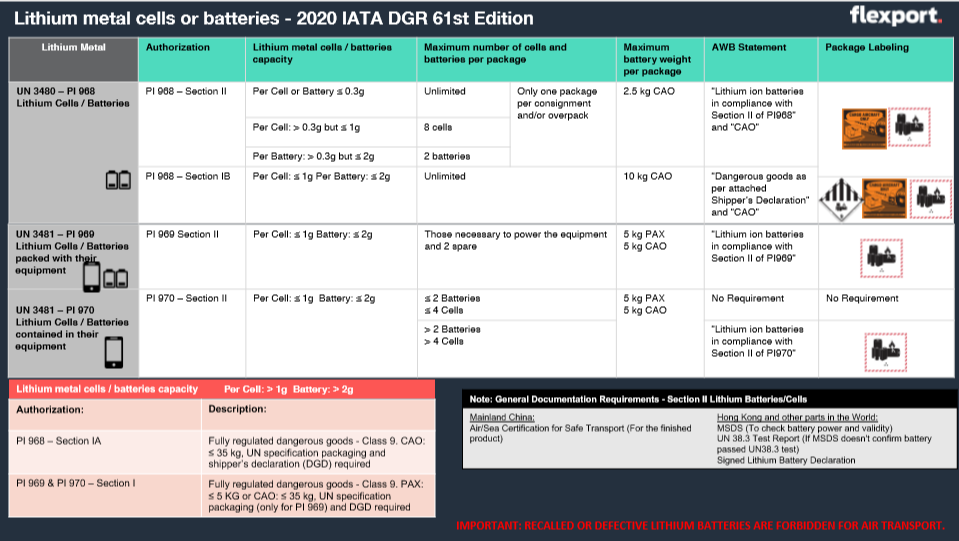Please note the following text is meant to be for informational purposes only and not for legal advice.
Shipping dangerous goods around the globe can be an arduous task. It is a complex and highly regulated process. There are many transport regulations that shippers must stay current with in order to have the proper knowledge to remain compliant, stay safe, and avoid penalties.
WHAT IS A DANGEROUS GOOD?
Dangerous goods (DG) are any substance or article than can harm a person, property, or environment during transport. Whether a product is considered a dangerous good depends on various factors such as flammability, concentration of the substance, or whether it is shipped via ocean or air. It is the shipper’s responsibility to determine if their goods meet the requirements to be classified as dangerous goods, depending on their mode of transport. It is important to remember to look for “hidden” dangerous goods—items that may just be a small part of a product. Any time you ship something that could be a DG (liquids, powders, creams, gels, batteries, etc.), it is important to still report it. Carriers and forwarders want proof this material was noted and is actually non DG, rather than not being noted at all.
PROCESS FOR SHIPPING A DG
In order to be qualified to ship dangerous goods, there are regulatory training requirements to complete. Once an employee takes the proper training courses and has an established ongoing DG program in place, they can earn a DG certification. A DG program consists of written policies and standard operating procedures in place as a foundation. Within that should be a training program for employees, a well laid out shipping and handling process, and audits to know if a DG program is working.
A DG shipper’s responsibilities include compliance, classification and declaration, packing, marking and labeling, and documentation. Declaring any potentially dangerous goods should be done during logistics booking. Customer invoice and packing list should be as descriptive as possible as well. There are a few DG documents that are needed depending on the scenario. A Safe Transport Report is typical for goods shipping out of mainland China. A MSDS report is need for DG shipping out of Hong Kong, the US, and generally the rest of the world. These reports provide technical and safety data, but it is important that they are filled out properly to reflect 100% compliancy to current regulations. Dangerous Goods Regulations (DGR), 61st Edition is mandatory to follow for Air shipments, and IMO IMDG Code 39-18 is mandatory for Ocean shipments.
Lithium Batteries
It is to be noted that lithium batteries are special cases that require special certifications and handling. In fact, damaged, defective, or recalled lithium batteries cannot be transported by air at all. There are also different rules to follow depending on whether you are shipping lithium-ion or lithium metal batteries.
For lithium-ion, it is important to understand your batteries’ capacity Watt-Hour. For lithium metal, you will need to know the aggregated lithium content. These numbers will refer you to different sections of regulations to follow.
How the batteries are packed is important too. Depending on whether the batteries are loose, inside equipment, or packed with equipment as spares will determine what needs to be done to remain DG transport compliant. Expect there to be different requirements, documentation and labeling, allowed battery output, batteries per package, allowed gross weight and more based on this. These requirements will again differ depending on whether you are shipping by air, ocean, or truck. Batteries must be packed against the current version of regulations to be valid.
Refer to the charts below for an example of requirements for lithium batteries for air transport based on the 2020 IATA DGR 61st Edition regulations.


Once the shipper has completed these documents and steps, the cargo moves on to the forwarder who will check each document and piece before sending it all to the carrier (whether that be a plane, boat, truck, etc.) The carrier will do once last check before acceptance and transport.
Classification can change due to mode of transport, even in the middle of shipping. Air transport typically has stricter limitations than ocean, for example. If cargo went from being ocean freight, then to express air to get to the customer, classification may change and could now be a DG. This is why it is crucial to know your route, plan ahead, and document goods properly if they have potential to be DG at any time during transport.
The ability to ship a dangerous good all depends on if the carrier accepts the shipment. Being diligent and following the process will provide the best chance for this.
RAMIFICATIONS FOR NON-COMPLIANCE
It is essential to be compliant with DG rules and processes because there are ramifications that can occur if not. A non-compliance DG shipment could result in:
- Carrier rejection
- Shipment delays
- Penalties, legal liability, and fines
- Serious injury or death if the cargo is not properly declared and therefore not stored properly
As of September 15th, 2019, the penalty for China dangerous goods misdeclaration is that ocean carriers can charge anywhere from $4000 to $15000 or more per container. Receiving only a fine for non-compliance is the best case scenario. The worst case scenario would also include serious injury, harm, or even death. This is why it is important to choose your suppliers carefully—so that they can help to properly handle and declare the DG.
TIPS FOR SUCCESSFULLY SHIPPING A DG
To be successful with shipping dangerous goods, here is a summary of a few things to keep in mind and to practice.
- Be detailed and diligent in preparing your documents, and update all of your documents before they expire.
- Remember, all batteries, powders, liquids, creams, and gels will require an MSDS
- A shipment can change from non-DG to DG mid shipment
- DG training is not enough without a solid DG program in place
- Vet your shipper thoroughly
By remembering these tips and taking the necessary precautions, we can all be safe and successful in shipping dangerous goods. At E-BI, we choose to partner with experienced factories that are often already making similar types of goods as those that our customers request. This type of experience can play an important role in helping to flag us and our customers when dangerous goods are in play and documents may be needed.
For further information regarding dangerous goods transport, visit https://www.iata.org/en/programs/cargo/dgr and http://www.imo.org/en/Publications/IMDGCode/Pages/Default.aspx

